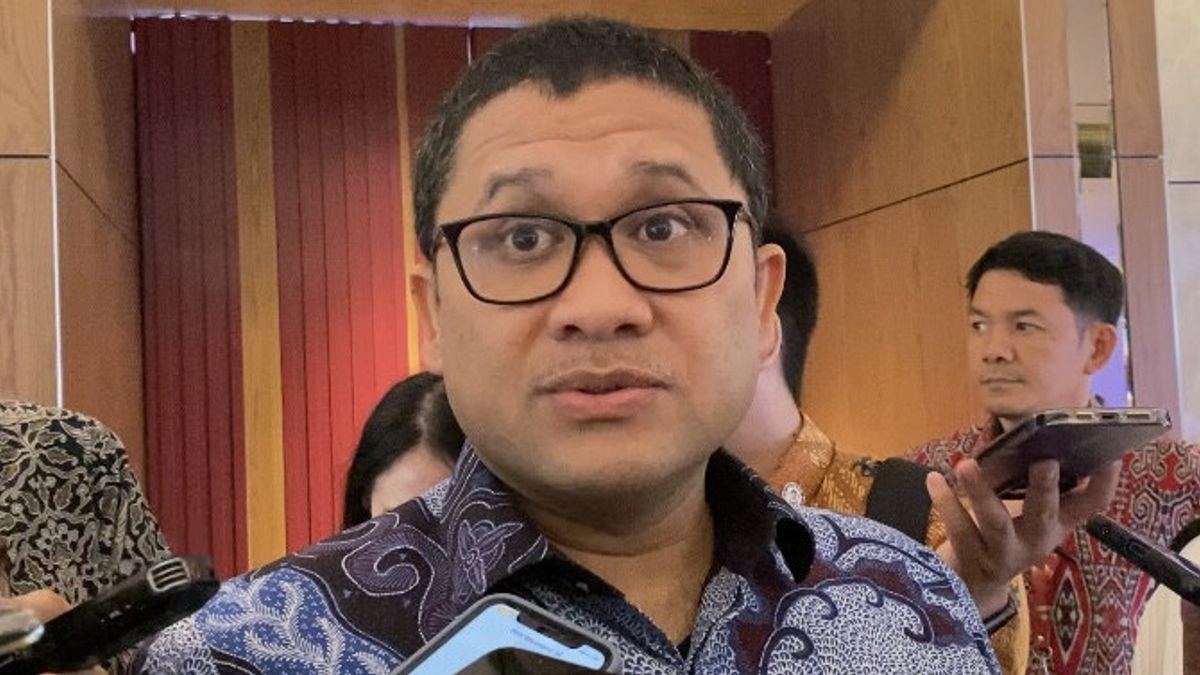JAKARTA - The Central Statistics Agency (BPS) noted that Indonesia's trade balance surplus during 2023 was US$36.93 billion.
Meanwhile, the trade balance surplus in December 2023 was USD 3.31 billion, an increase of USD 0.90 billion compared to the November 2023 surplus.
Head of the Fiscal Policy Agency (BKF) of the Ministry of Finance (Kemenkeu) Febrio Kacaribu said this achievement shows Indonesia's maintained trade performance amidst the slowdown in the global economy.
"Although it has decreased compared to 2022, yesterday's trade balance surplus in 2023 showed the external resilience of the national economy amid increasing global risks, including commodity price moderation and the economic slowdown of major trading partner countries such as China," said Febrio in a written statement, Tuesday, January 16.
The value of Indonesia's exports in 2023 was recorded at US$258.82 billion, slightly below the export achievement in 2022 of US$291.90 billion. Although in nominal terms Indonesia's exports experienced a decline, in terms of volume, Indonesia's exports in 2023 still grew 8.55 percent (yoy).
Febrio said the slowdown in export value was in line with the moderation of Indonesia's leading commodity prices, such as palm oil and coal.
In addition, the economic slowdown in a number of Indonesia's main trading partner countries also contributed to the slowdown in Indonesia's export value.
Throughout 2023, Indonesia's exports will still be concentrated in China with a share of 25.66 percent, the United States with a share of 9.57 percent, and India with a share of 8.35 percent.
Meanwhile, Indonesia's exports to Asean and the European Union each have a share of 18.35 percent and 6.78 percent of Indonesia's total exports in 2023.
Meanwhile, Indonesia's imports throughout 2023 reached 221.89 billion US dollars, down about 6.55 percent (yoy) compared to 2022.
The largest contributor to the slowdown in imports was machinery or electrical equipment and its parts, while machinery and mechanical equipment and parts contributed to the increase in imports.
According to Febrio, just like exports, volume, Indonesian imports still recorded positive growth of 8.04 percent (yoy), in line with the strong domestic demand.
Sectorally, imports of capital goods and consumer goods recorded positive growth, while imports of raw materials decreased. Indonesia's largest imports are also still dominated by Chinese and Japanese countries with a maximum share of 33.42 percent and 8.84 percent of Indonesia's total imports.
In 2024, Febrio said Indonesia's trade activities would still be influenced by the uncertainty of global economic activity as reflected in the projected slowdown in global economic growth by various international institutions which were also followed by commodity price moderation.
"In this regard, the Government will continue to monitor and prepare the necessary anticipatory steps. The government will continue to monitor the impact of the global slowdown on national exports, as well as prepare anticipatory steps through encouraging the sustainability of SDA downstreaming, increasing the competitiveness of national export products, and diversifying major trading partner countries," concluded Febrio.
The English, Chinese, Japanese, Arabic, and French versions are automatically generated by the AI. So there may still be inaccuracies in translating, please always see Indonesian as our main language. (system supported by DigitalSiber.id)











